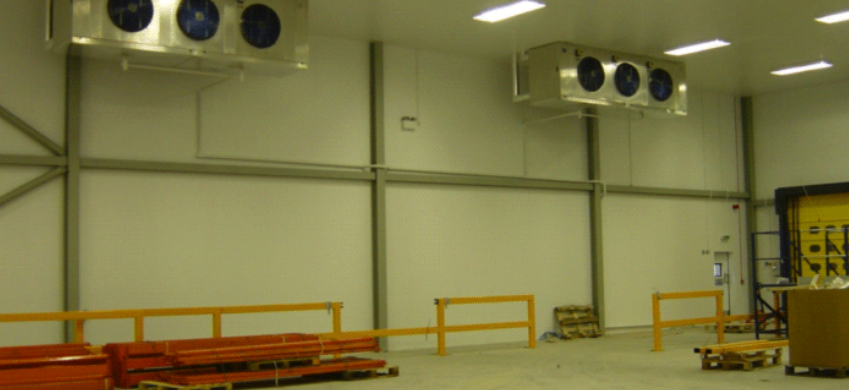Process Cooling and Air Handling
Many food factories require both high care and low care environments.
Typically, the high care environment will require a positive air pressure to ensure airborne particles are carried away from the high care area. This is usually achieved by supplying air into the high care area, which raises the overall pressure in the high care area which ensures that any opening always has an air flow from the high care area, meeting food safety and compliance requirements.

The air is supplied to the high care area from the handling unit is filtered to EU4 (prefilter) and finally EU8 (fine filter). The air is cooled or heated to the required level to make sure the environment is correct for the product and the operatives working in the space. Humidification or dehumidification may also be controlled in the air handler so providing the complete environmental control.
When designing new systems, Valley prefer to install a secondary refrigeration plant. For instance, in a new facility, we have an ammonia refrigeration plant chilling glycol which is pumped around the facility in a low-pressure pipe work system. Any item requiring cooling is simply connected to the glycol system. In this way, the design optimises efficiency while reducing the amount of refrigerant required. No high pressure, high temperature or toxic refrigerant need to leave the plant room.
Planned maintenance is a legal requirement for air handlers with an install capacity of over 12 kilowatts. The regulations stipulate the inspections that need to be carried out and specify their frequency. All of these regulations are drawn from good engineering design and operational practices. Valley take pride in operating to those standards and believe it is the only way to keep equipment efficient and safe.
